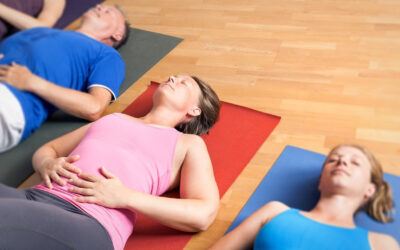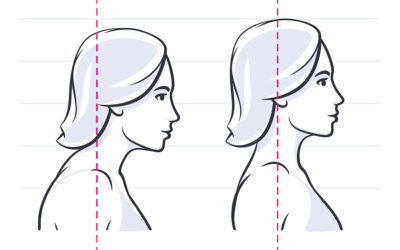Take a look at the photo above. The person has taken a posture of stress and pain. The body is in an extended position. They have overly-arched their lower back. Also, they have pulled their shoulders so far back that they are behind the hips. Finally, their diaphragm is overly stretched, reducing breathing capacity. Actually, my body likes to assume this posture. When my body goes into this stressed position, my mind follows. It becomes rigid and unfocused. The stress can also start in my mind, with my body soon following into extension.
Recently, I went to visit my physical therapist, Raulan, in Burley, ID. When I went, I was a mess–physically, mentally, emotionally and spiritually. For the days leading up to my visit, I had felt agitated. Everyone seemed to be annoying me. I was stressed because I couldn’t find time to do the things I wanted, and I had a very low tolerance when things didn’t go as planned. You may know the feeling–like you’re on the edge and at any moment may be pushed over into the abyss. Additionally, my body hurt. My lower back pain had flared up, and I had unrelenting neck and shoulder tightness.
Not surprisingly, when Raulan, certified by the Postural Restoration Institute (PRI), tested my body position, I was twisted. According to PRI, the body assumes a common pattern when it is out of balance. The pelvis rotates to the right, while the rib cage rotates to the left. This is a natural movement pattern: the body is designed to counter rotate. To illustrate, if you take a step forward with your left foot, the pelvis rotates right. Meanwhile, the right arm swings forward and the rib cage counter balances by rotating to the left.
When the body becomes stuck in this orientation and is unable to equally rotate back with left pelvis rotation and right rib cage rotation, it becomes a problem. When my pelvis is stuck in a right rotation, I am dominant on my right leg. In other words, the right leg bears more of my weight and does more work than the left. Here’s an anatomical perspective: in order to rotate my pelvis right when walking, I transfer weight to my right leg and hip and engage the surrounding muscles to stabilize my joints while the left leg swings forward freely.
If my pelvis doesn’t have the ability to rotate left and only gets to the midline (center) of my body, I don’t transfer sufficient additional weight to my left leg. I never fully rotate into my left hip and engage the surrounding musculature since my pelvis has failed to twist sufficiently to the left. My left lower body is underutilized, and the muscles in and around my left hip and leg grow weak and dysfunctional. This imbalance makes it feel as though my left leg is disconnected from my body. It is not working in coordination with the rest of my body as I move. I don’t seem to have the same control over my left leg as the right.
 The exercise Raulan started me with was simple, yet powerful. He just wanted me to find and feel the left side of my body. In a staggered stance–with my left foot back and left arm forward–I positioned myself with my pelvis rotating left and rib cage rotating right, opposite of my current twisted position. Raulan instructed me to just feel my left foot contact the ground. I noticed the weight in my heel and big toe and become aware of the connection I had through my left side into the floor. Here, I placed about 80% of my weight on my left leg. This was a grounding exercise to help balance my body and mind. The purpose was to remind me that I had a left side and how to use it.
The exercise Raulan started me with was simple, yet powerful. He just wanted me to find and feel the left side of my body. In a staggered stance–with my left foot back and left arm forward–I positioned myself with my pelvis rotating left and rib cage rotating right, opposite of my current twisted position. Raulan instructed me to just feel my left foot contact the ground. I noticed the weight in my heel and big toe and become aware of the connection I had through my left side into the floor. Here, I placed about 80% of my weight on my left leg. This was a grounding exercise to help balance my body and mind. The purpose was to remind me that I had a left side and how to use it.
When the rib cage rotates and stays to the left as mine had, it also tilts in the sagittal plane–front to back plane of motion. The lower front of the rib cage extends or flares forward, up and away from the torso, while the upper back portion of the rib cage moves backwards and down. There are two effects of this rib cage position. First, breathing is inefficient because the diaphragm, the primary muscle of inspiration, is in a poor orientation. This leads to chest or “stress” breathing where you mainly utilize your upper lungs and are reliant on your accessory muscles to breathe. Second, there is increased pressure on the nerves on the back of your spinal cord. These nerves, when compressed, activate the sympathetic nervous system. So these postural deviations keep you in a neurological state of “fight or flight.” Notice in the exercise above that I am bending my trunk slightly to the left to engage the abdominal muscles so that they bring my rib cage down on that side.
(Source: Postural Respiration Course)
In a previous blog (3 Ab Exercises You Should Be Doing!) I wrote, “An aligned rib cage and pelvis not only alleviates orthopedic pain but can also calm your mental state. Stay tuned for more about that soon . . .” Well, as the late Paul Harvey, conservative ABC radio broadcaster, would say, this is “The Rest of the Story.” Abdominal muscles help with exhalation and assist in maintaining a neutral, non-twisted rib cage position. Realigning the rib cage also relieves pressure on the sympathetic nerves and relaxes your nervous system into a parasympathetic, “rest and digest” state.
As I stood in the split stance exercise, Raulan cued me to breathe into my right chest wall and pull my left ribs down and forward upon exhale. As I held the position and focused on my breathing, the tension in my mind eased. I didn’t feel as revved up and anxious. After a few more breaths, I came out of the position and walked easily for a few minutes. Upon retest of my position, I was no longer twisted. My body was neutral. My mind was more balanced.
How cool is that?! I just had to assume a counter rotated stance, which reversed my twisted position, and practice attentive breathing. Now I have a new tool to use when I feel the stressors of life starting to overwhelm me. If my mind is losing balance, I can bet my body is no longer neutral. Time to stop, find my left side and breathe!
So, give it a try! It might work for you, too! Posture alignment isn’t just for your physical body. It also benefits your mental, emotional and spiritual health. In a nutshell, get straight to release your stress.
There is one more piece to my posture puzzle. You might have noticed the cool blue specs I’m wearing as I’m performing this exercise. These aren’t just for good looks! They help me gain a neutral position. This weekend I’ll attend the PRI Postural-Visual Integration course, so expect a future blog on the role vision plays in alignment . . .



